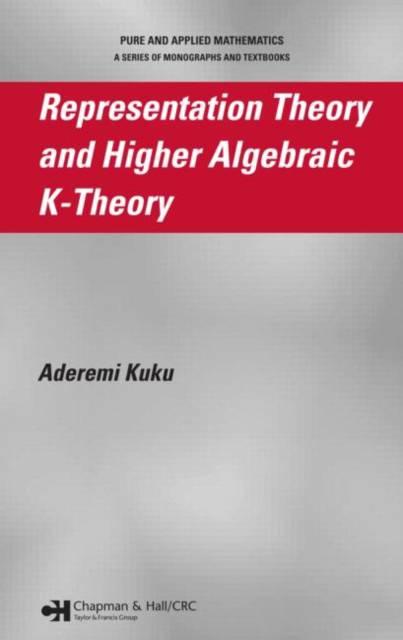
- Afhalen na 1 uur in een winkel met voorraad
- Gratis thuislevering in België vanaf € 30
- Ruim aanbod met 7 miljoen producten
- Afhalen na 1 uur in een winkel met voorraad
- Gratis thuislevering in België vanaf € 30
- Ruim aanbod met 7 miljoen producten
Zoeken
Omschrijving
Representation Theory and Higher Algebraic K-Theory is the first book to present higher algebraic K-theory of orders and group rings as well as characterize higher algebraic K-theory as Mackey functors that lead to equivariant higher algebraic K-theory and their relative generalizations. Thus, this book makes computations of higher K-theory of group rings more accessible and provides novel techniques for the computations of higher K-theory of finite and some infinite groups. Authored by a premier authority in the field, the book begins with a careful review of classical K-theory, including clear definitions, examples, and important classical results. Emphasizing the practical value of the usually abstract topological constructions, the author systematically discusses higher algebraic K-theory of exact, symmetric monoidal, and Waldhausen categories with applications to orders and group rings and proves numerous results. He also defines profinite higher K- and G-theory of exact categories, orders, and group rings. Providing new insights into classical results and opening avenues for further applications, the book then uses representation-theoretic techniques-especially induction theory-to examine equivariant higher algebraic K-theory, their relative generalizations, and equivariant homology theories for discrete group actions. The final chapter unifies Farrell and Baum-Connes isomorphism conjectures through Davis-Lück assembly maps.
Specificaties
Betrokkenen
- Auteur(s):
- Uitgeverij:
Inhoud
- Aantal bladzijden:
- 470
- Taal:
- Engels
- Reeks:
- Reeksnummer:
- nr. 287
Eigenschappen
- Productcode (EAN):
- 9781584886037
- Verschijningsdatum:
- 27/09/2006
- Uitvoering:
- Hardcover
- Formaat:
- Ongenaaid / garenloos gebonden
- Afmetingen:
- 162 mm x 242 mm
- Gewicht:
- 789 g

Alleen bij Standaard Boekhandel
+ 732 punten op je klantenkaart van Standaard Boekhandel
Beoordelingen
We publiceren alleen reviews die voldoen aan de voorwaarden voor reviews. Bekijk onze voorwaarden voor reviews.








